13 Easy Vegetables to Direct Sow
This post may contain affiliate links, which means that I may receive a commission if you make a purchase using these links. As an Amazon Associate I earn from qualifying purchases.
Direct sowing seeds is one of the simplest and most rewarding ways to grow a vegetable garden. Unlike starting seeds indoors, direct seeding allows you to plant seeds straight into your garden soil, where they will grow and thrive.
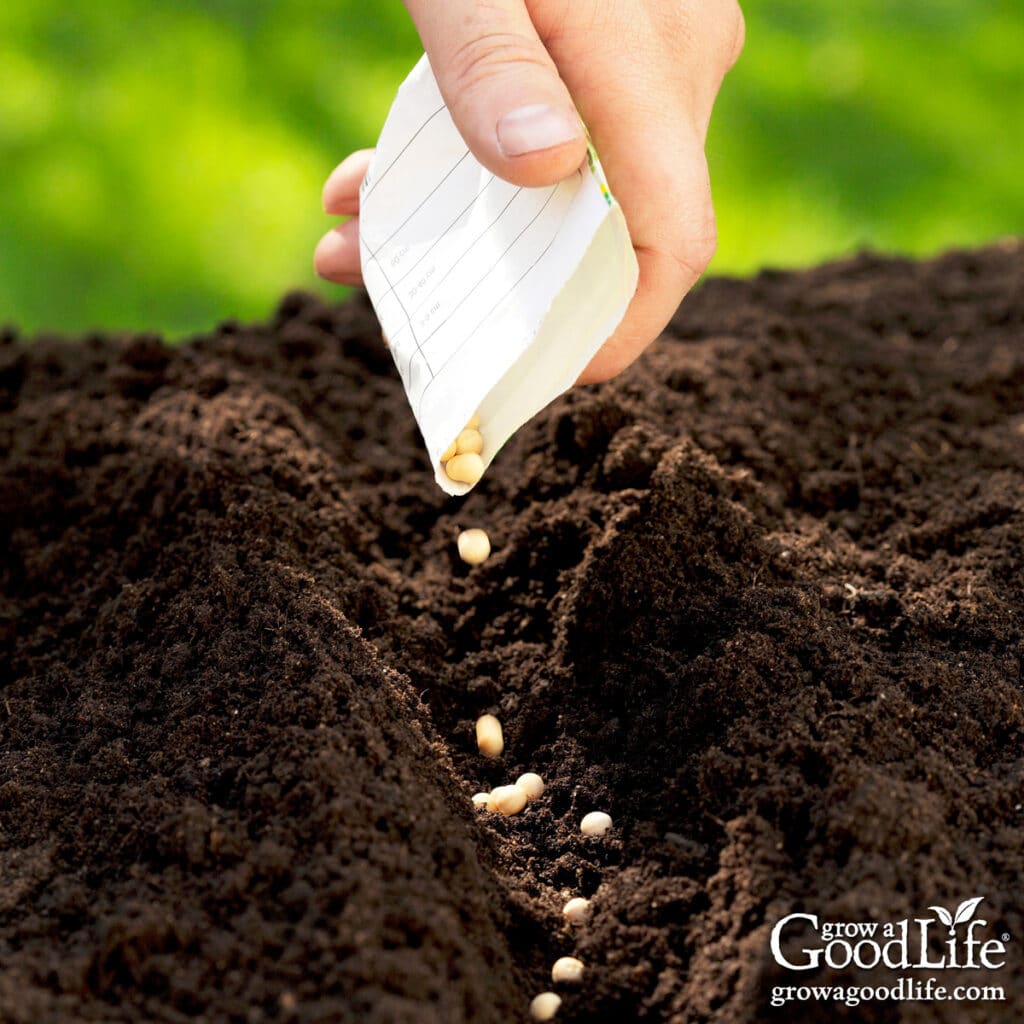
For gardeners in warmer climates, most crops can be direct sowed throughout the growing season. However, if you’re gardening in a cooler region, you may need to purchase seedlings or start some plants indoors to give them a head start to ensure they have enough time to mature. That said, many hardy and fast-growing vegetables are well-suited for direct sowing, even in shorter growing seasons.
To direct sow your seeds just means to plant your seeds outdoors in the garden where they will grow instead of starting the seeds indoors in containers under lights.
In this guide, we’ll walk you through the basics of direct seeding, including effective methods of sowing, step-by-step instructions for planting seeds directly in the garden, and a list of 13 easy vegetable seeds to direct sow. Whether you’re planning a small raised bed or a sprawling backyard garden, you’ll find everything you need to get started.
Why Direct Sow?
Direct sowing eliminates the need for buying seedlings or starting seeds indoors under lights, saving money, time, and effort. All you need is prepared garden soil, seeds, and water. Here are some reasons to consider direct seeding for your vegetable garden:
- Stronger Root Systems: Plants grown from seeds sown directly in the ground develop strong, undisturbed root systems. Unlike transplants, which can experience transplant shock, direct-seeded plants are more likely to thrive and establish quickly.
- Cost-Effective: Seeds are much more affordable than purchasing seedlings. By direct seeding, you can grow at a fraction of the cost of store-bought plants.
- Better for Sensitive Crops: Certain vegetables, like carrots, beets, and peas, do not transplant well due to their delicate roots. Direct sowing is the best method for these crops, ensuring they grow without interruption.
- Ideal for Succession Planting: Direct seeding allows for easy succession planting, ensuring a continuous harvest throughout the growing season. By sowing seeds at intervals, you can enjoy fresh vegetables for months.
Whether you’re growing leafy greens, root vegetables, or sprawling vines, direct sowing offers an efficient and rewarding way to cultivate a thriving vegetable garden. By understanding the best methods of sowing and selecting crops suited for direct seeding, you can set your garden up for success.
Direct Sowing Methods
Planting seeds directly into your garden bed is a straightforward and efficient way to grow vegetables. There are several methods of sowing to suit different crops and garden setups. You can sow seeds in furrows, mounds, or simply by poking holes in the soil and dropping in the seeds. Here are three popular techniques for direct seeding:
1. Block Planting
This method involves sowing seeds in a grid pattern with even spacing in all directions. Block planting is ideal for raised beds, square-foot gardening, or intensive gardening systems.
- How To: Follow the seed packet’s instructions for spacing. Simply poke holes in the soil, sow seeds at the recommended depth, cover with soil, and water gently.
- Best For: Leafy greens, carrots, radishes, and other small crops.
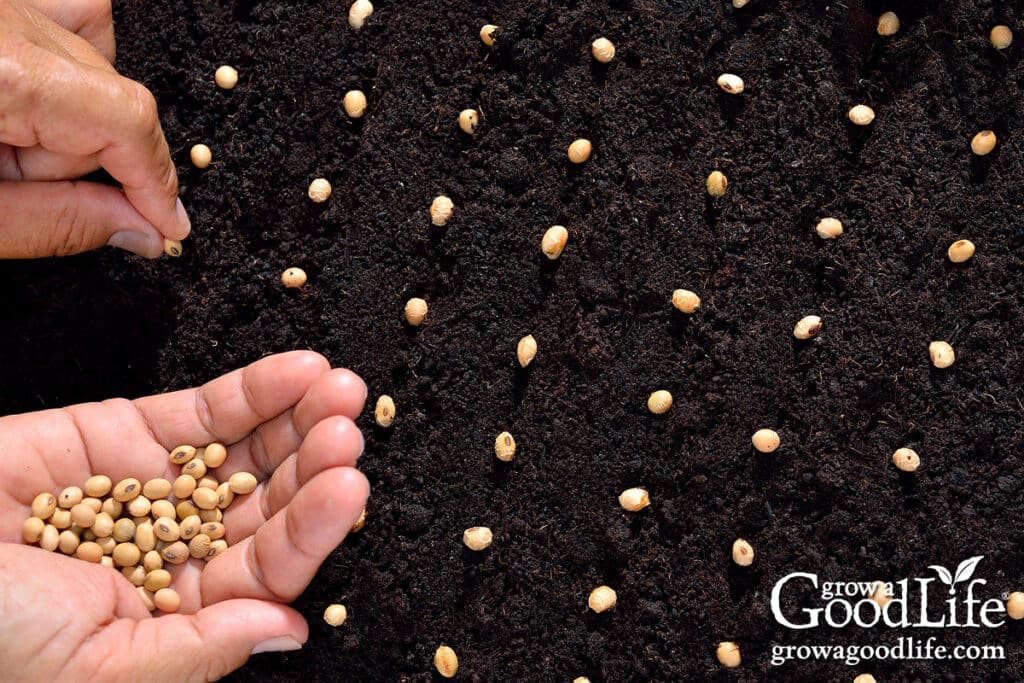
2. Mounds or Hills
Mounding the soil into small hills creates a raised planting area that drains well and warms quickly, aiding seed germination. This method is perfect for vegetables with sprawling vines. Growing in mounds in the center of the garden bed provides plenty of room for the vines to stretch out.
- How To: Form a mound about 6 inches high and 1 to 2 feet in diameter. Flatten the top, sow seeds according to the seed packet, and keep the soil moist until germination.
- Best For: Squash, zucchini, melons, and cucumbers.
3. Furrow or Row Planting
Furrow planting involves digging shallow trenches (furrows) in the soil, making it easier to sow seeds in neat rows. This is one of the most traditional methods of sowing seeds.
- How To: Use a garden tool or a stick to create furrows at the recommended depth. Sprinkle your seeds along the length of the trench according to the spacing recommendations on the seed package, cover them lightly with soil, and water evenly to keep the soil moist during germination.
- Best For: Beans, peas, corn, and root crops like beets and turnips.
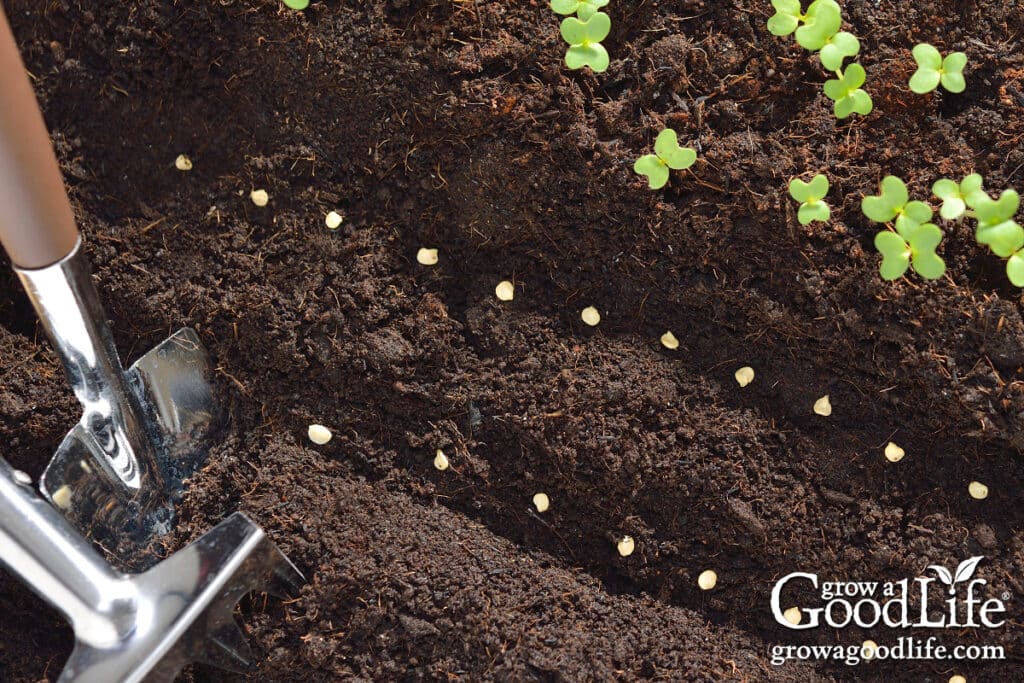
Each method of sowing has its advantages depending on the vegetable and garden design. Refer to your seed packet for detailed instructions on depth, spacing, and thinning recommendations to ensure healthy growth.
How to Direct Sow Seeds
Direct sowing seeds is a simple process, but following a few key steps will help ensure success. Here’s a step-by-step guide to get your garden off to a great start:
1. Review the Seed Packet
The seed packet is your best resource for successful direct seeding. It provides essential information, including:
- Timing: When to sow seeds based on your last frost date.
- Depth: How deep to plant the seeds for proper germination.
- Spacing: How far apart to sow seeds for optimal growth.
- Thinning Instructions: Recommendations for thinning crowded seedlings to allow space for healthy development.
🌱 Pro Tip: Not sure of your last frost date? Use PlantMaps.com to find it by entering your zip code.
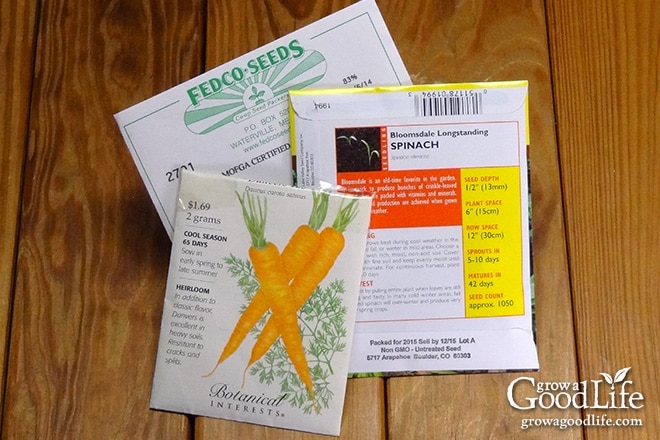
2. Prepare Your Garden Bed
A well-prepared and weed-free bed makes it easier to sow seeds and promotes healthy growth.
- Remove weeds, rocks, and large clumps of soil.
- Work in compost or a balanced fertilizer to enrich the soil.
- Water the soil thoroughly the day before planting to ensure it’s evenly moist.
3. Sow Seeds Using Your Chosen Method
Choose a method of sowing seeds (e.g., block planting, mounds, or furrows) and follow these steps:
- Plant seeds at the depth and spacing recommended on the seed packet.
- Firm the soil gently over the seeds to ensure good contact between the seeds and the soil.
- Use plant markers or stakes to label your rows or planting areas.
4. Water Consistently
After sowing seeds, gently water them to settle the soil. Keep the soil evenly moist until seedlings emerge and the plants become established. Avoid overwatering, as waterlogged soil can cause seeds to rot.
5. Thin Seedlings
Once the seedlings have developed their first set of true leaves, it’s time to thin them. Thinning helps prevent overcrowding, improving airflow and giving plants the space they need to thrive.
- Use scissors to snip weaker seedlings at the soil line instead of pulling them, which can disturb the roots of nearby plants.
- Follow the spacing guidelines on the seed packet for the best results.
6. Mulch to Retain Moisture
When young seedlings are established, apply a layer of organic mulch around the plants to:
- Suppress weed growth.
- Retain soil moisture.
- Regulate soil temperature.
🌱 Pro Tip: Keep mulch a few inches away from the seedling stems to prevent rot or smothering.
By following these steps, you can master the art of direct sowing seeds and enjoy a bountiful garden with minimal effort.
13 Easy Vegetables to Direct Sow
Direct sowing seeds is an efficient and rewarding way to start your garden. These 13 vegetables are perfect candidates for direct seeding, offering simple planting methods and bountiful harvests.
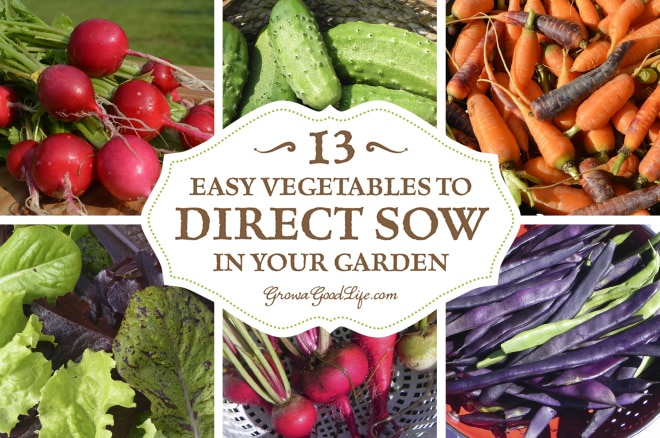
Beans:
There are generally two types of beans, bush and pole. Pole beans grow long vines and will need support of a pole or trellis. Pole beans continue to produce for a long time until frost. Bush beans produce their crop quicker and all around the same time. Plant several succession plantings of bush beans two weeks apart for a continuous harvest all summer long.
- Planting Tips: Soak seeds in water for 4 to 6 hours to encourage quick germination. Sow seeds 1 inch deep and 3 to 4 inches apart after the danger of frost has passed. Thinning is unnecessary. Plant several succession plantings of bush beans two weeks apart for a continuous harvest all summer long.
- Best Time: Late spring after the danger of frost is past when the soil has warmed. Succession plant bush beans throughout the summer.
- Growing Guide: Learn more about growing beans.
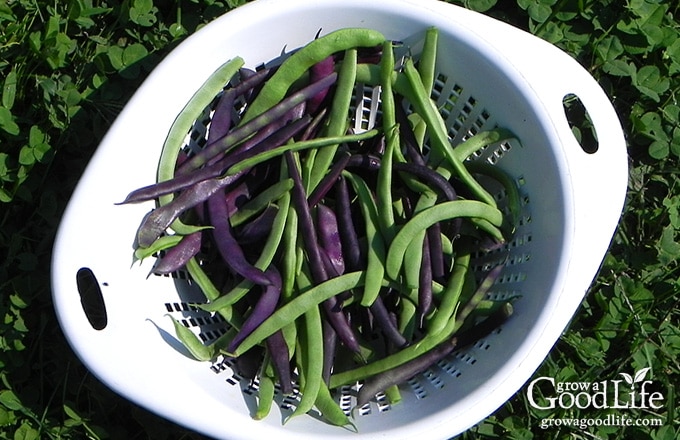
Beets:
This double-duty crop produces both fresh greens and roots. Beets prefer cool weather. Beet seeds are actually a seedpods that contain several seeds, so they will need some thinning as they grow.
- Planting Tips: Seeds germinate quicker in warmer soil and can benefit from a brief soaking for 4 to 6 hours before planting. Sow seeds 1/4 inch deep and 1 inch apart. Thin to 3 to 6 inches apart when seedlings are about 5 inches tall, and use the thinnings as edible greens.
- Best Time: Early spring, as soon as the soil is workable. Sow every three weeks for continuous harvests.
- Growing Guide: Learn more about growing beets.
Carrots:
Carrots are a cool-season crop and will tolerate frost once established. Carrot seeds are tiny and can be challenging to space individually. Consider making homemade seed mats for easy spacing of small seeds.
- Planting Tips: Sow seeds 1/2 inch deep and 1/3 inch apart. Keep soil moist and thin seedlings to 1 inch apart for baby carrots or 3 inches apart for larger varieties.
- Best Time: Three weeks before the last expected frost. Succession sow for a continuous harvest.
- Growing Guide: Learn more about growing carrots.
Corn:
Since corn is wind-pollinated, so plant it in blocks or at least four short rows side-by-side for better pollination.
- Best Time: About two weeks after the last frost date, once the soil temperature is about 60˚ F.
- Planting Tips: For most varieties, sow seeds 1 inch deep and 4 to 6 inches apart when the soil reaches 60°F. Thin to 12 inches apart once seedlings emerge.
Cucumbers:
Grow cucumbers in mounds or hills and allow plenty of room for the vines to stretch out or grow along a trellis to save space.
- Planting Tips: For most varieties, plant 1-inch deep, and 6 to 8 inches apart. If you are growing cucumber on mounds, sow three plants per hill, and space your hills 18 to 36 inches apart. No thinning is needed if you are growing along a trellis or in mounds.
- Best Time: About a week after the last frost date once the soil has warmed.
- Growing Guide: Learn more about growing cucumbers.
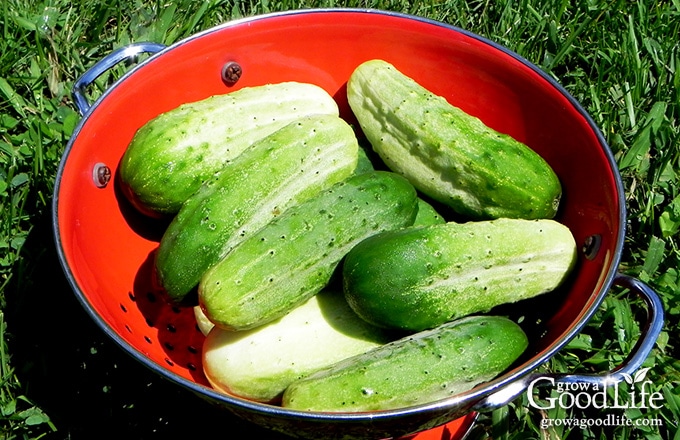
Lettuce:
There are so many varieties of lettuce with various colored and shaped leaves. Lettuce prefers cool weather and will tolerate frost once established.
- Planting Tips: Sow seeds 1/4 inch deep in early spring, thinning to 4 inches for leaf lettuce, 8 inches for cos, and 16 inches for head lettuce. Keep soil moist. Thin leaf lettuce varieties to 4 inches apart, cos and loose-head varieties to 8 inches apart, and firm-head varieties to 16 inches apart.
- Best Time: As soon as the ground can be worked in spring. Succession sow every two weeks throughout the cooler spring, then plant again in mid-to-late summer summer for fall harvest.
- Growing Guide: Learn more about growing lettuce.
Peas:
Some pea varieties grow short vines, and some long vines, but all pea plants benefit from some trellis supports to satisfy their climbing nature. The pods will be easier to harvest along a trellis too. Peas like cool weather and will tolerate some frost once the plants are established.
- Planting Tips: Seeds germinate quicker in warm soil and can benefit from a brief soaking in water for 4 to 6 hours before planting. Sow seeds 1 inch deep and 2 to 3 inches apart in early spring. Thinning is unnecessary.
- Best Time: Early spring, when the soil is workable.
- Growing Guide: Learn more about growing peas.
Radish:
Radishes are a rewarding vegetable to grow. It prefers cool weather and matures quickly.
- Planting Tips: Sow seeds 1/2 inch deep and 2 to 3 inches apart in early spring. Thinning is unnecessary. Sow every two weeks during the cooler months for a continuous harvest.
- Best Time: As soon as the ground can be worked in spring.
- Growing Guide: Learn more about growing radishes.
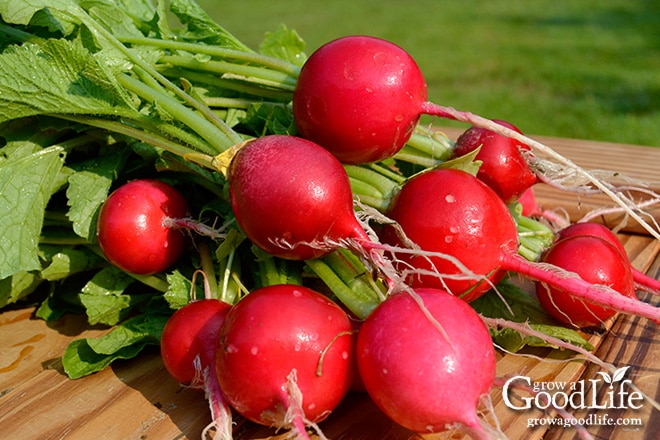
Scallions:
Scallions (also called green onions or bunching onions) are frost tolerant, and many varieties will overwinter and continue growing the following season, even in my Maine garden.
- Planting Tips: Sow seeds 1/4 inch deep and 1/2 inch apart in early spring. Thin to 1 to 2 inches apart, depending on desired bulb size.
- Best Time: As soon as the soil is workable.
- Growing Guide: Learn more about growing scallions.
Spinach:
Spinach prefers cool weather and even young plants will tolerate frost. Seeds do not germinate well in warm soil. Pre-sprouting seeds can improve germination in cool soil.
- Planting Tips: Direct sow seeds 1/2 inch deep and 1 inch apart. Thin to 2 to 6 inches apart. Sow every two weeks during the cooler months for a continuous harvest. Sow again in mid-to-late summer summer for fall harvest.
- Best Time: Early spring and again in mid-to-late summer for fall harvest.
- Growing Guide: Learn more about growing spinach.
Squash:
There are two main types of squash: winter squash and summer squash. Summer squash is harvested young, while the skin is soft. Winter squash and pumpkins take much longer to grow and ripen and are harvested when fully mature.
- Planting Tips: Use the mound or hills planting method for most squash varieties. Sow seeds 1 inch deep and 6 to 8 inches apart, with hills spaced 4 to 6 feet apart. Thin to three plants per hill.
- Best Time: Once the soil warms, about a week after your last frost date.
- Growing Guide: Learn more about growing squash and growing pumpkins.
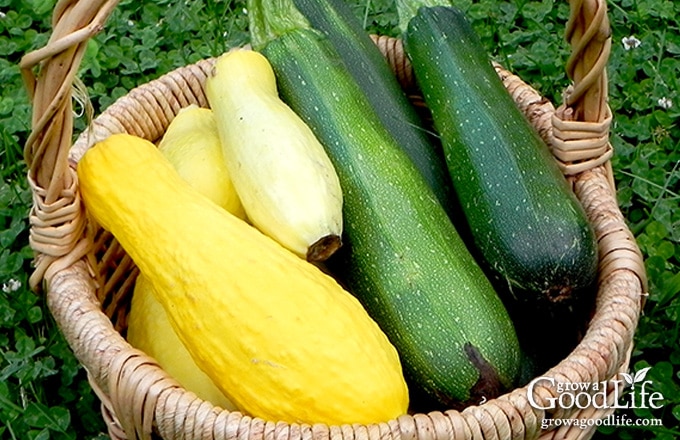
Swiss Chard:
Swiss chard is one of the few greens that will grow in both cool weather and heat.
- Planting Tips: Seeds germinate quicker in warmer soil and can benefit from a brief soaking in water for 4 to 6 hours before planting. Sow seeds 1/2 inch deep and 2 inches apart. Like beets, Swiss chard seed pods contain several seeds. Once the plants are about 4 inches high, thin to one plant every 6 to 12 inches.
- Best Time: Two weeks before the last frost date.
- Growing Guide: Learn more about growing Swiss chard.
Turnip:
Grow turnips for both the greens and roots. It prefers cool weather.
- Best Time: Early spring and throughout cooler months for successive harvests.
- Planting Tips: Direct sow seeds 1/4 inch deep and 1 to 2 inches apart. Thin small turnip varieties to 2 to 4 inches apart and larger varieties to 4 to 6 inches apart. Thinning isn’t necessary if growing for greens only. Succession plant every two weeks during the cooler months for a continuous harvest.
Direct sowing seeds is a simple and rewarding way to grow a productive vegetable garden. By skipping the transplant process, you can get your seeds into the ground and on their way to becoming healthy, thriving plants. With the 13 easy vegetables listed here, you’ll enjoy fresh harvests from spring through fall.
Whether you’re planting quick-growing radishes or planning for a bountiful corn harvest, direct sowing allows you to make the most of your garden space and seasonal conditions.
Now that you’ve learned how to get started, it’s time to put your knowledge into action. Gather your seeds, prep your garden beds, and start sowing. Be sure to explore the growing guides linked throughout this article for detailed advice on caring for each crop. With a little care and attention, your garden will soon be brimming with vibrant, homegrown vegetables!
This article was originally published in February 2016. It has been updated in 2025 with new details, tips, and resources to help you successfully direct sow seeds in your garden.
You May Also Like:
- Succession Planting Tips to Maximize Your Harvest
- 10 Steps to Starting Seedlings Indoors
- How to Harden Off Seedlings
- Vegetable Garden Planning: Mapping the Garden Beds
Good planning is key to a successful vegetable garden
Whether you are new to growing your own food or have been growing a vegetable garden for years, you will benefit from some planning each year. You will find everything you need to organize and plan your vegetable garden in my PDF eBook, Grow a Good Life Guide to Planning Your Vegetable Garden.

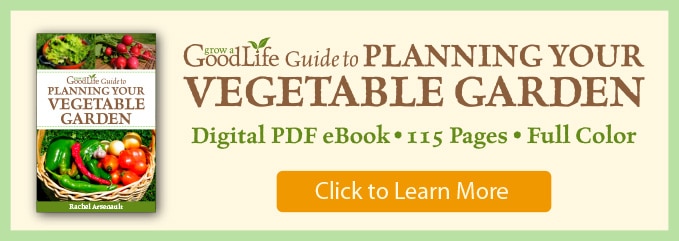
Do you ever experience bush beans falling over once they have grown to maturity? Ours have done this a number of seasons. They fall over and break. Would you have any suggestions for us to help prevent this from happening?
Mary, Are the stems bending or are they cut? If the stems look like they have been cut off at the soil surface, you may have a problem with cutworms. You can place a collar or small sticks around the stems to prevent the worm from wrapping itself around the stem and eating it through.
I do find bush beans floppy especially when they are heavy with beans. I add four poles to the corners of garden bed and string some twine to provide support as the plants grow. This helps the plants to remain upright and prevents them from flopping into the garden paths. If you are growing in rows, place several stakes along the row and string some twine along both sides about a foot up from the ground.
Many thanks. This has helped in my selection of what to grow this year. I’ve not tried beets, radishes, peas or Swiss chard yet, but looking forward to giving them a go!
Tom, Thank you for your comment. Yes, it is so difficult to decide what to grow this year in particular. If you haven’t yet, also check out this article: How to Decide What to Grow in Your Vegetable Garden. Please feel free to get in touch if you have any questions.
Having all these veggies gathered in one place comes in very handy. Cucumbers and corn are personally my favourite!
Spring is in the air and it’s time to plan our gardens. I am so delighted that you shared your healthy and delicious these vegetables that we can direct sow at the Healthy Happy Green Natural Party! I’m Pinning and sharing this!
Good morning! Just a little note to let you know that this article has been FEATURED today on the Art of Home-Making Mondays at Strangers & Pilgrims on Earth! Thank you for joining us and have a wonderful week!
Thank you, JES!
I would love to be able to direct sow. Unfortunately being impatient and in Canada, I usually germinate indoors.
This is so great! Thank you for this list. I will be referencing it for sure. The problem we have in NC is that it’s cold, cold, and then HOT. The past few years we have totally skipped spring! It goes from 40 in the day and then the following week it’s in the 70’s and the week after it’s 80. But the night temps for the 40 days are freezing. Oy. We have not had too much success with gardening, but I plan to keep on trying, keep on trying 🙂
Blessings,
Kerri
It isn’t often I wish an article had a print button… this one qualifies!
Thank you, Kathryn!
I sometimes don’t have the best of luck with direct sowing and will often grow transplants for things such as lettuce and chard. But it’s good to have options – last year my indoor seeded fall lettuce was a complete failure. I would not have had any to harvest had I not direct sown subsequently – I still had issues, but at least I ended up with a modest stand of lettuce at the end.
I do both too. I like to start lettuce and chard indoors to give them a head start. After transplanting these to the garden, I usually direct sow some seeds for a succession crop. The direct sowed plants usually catch up quickly.